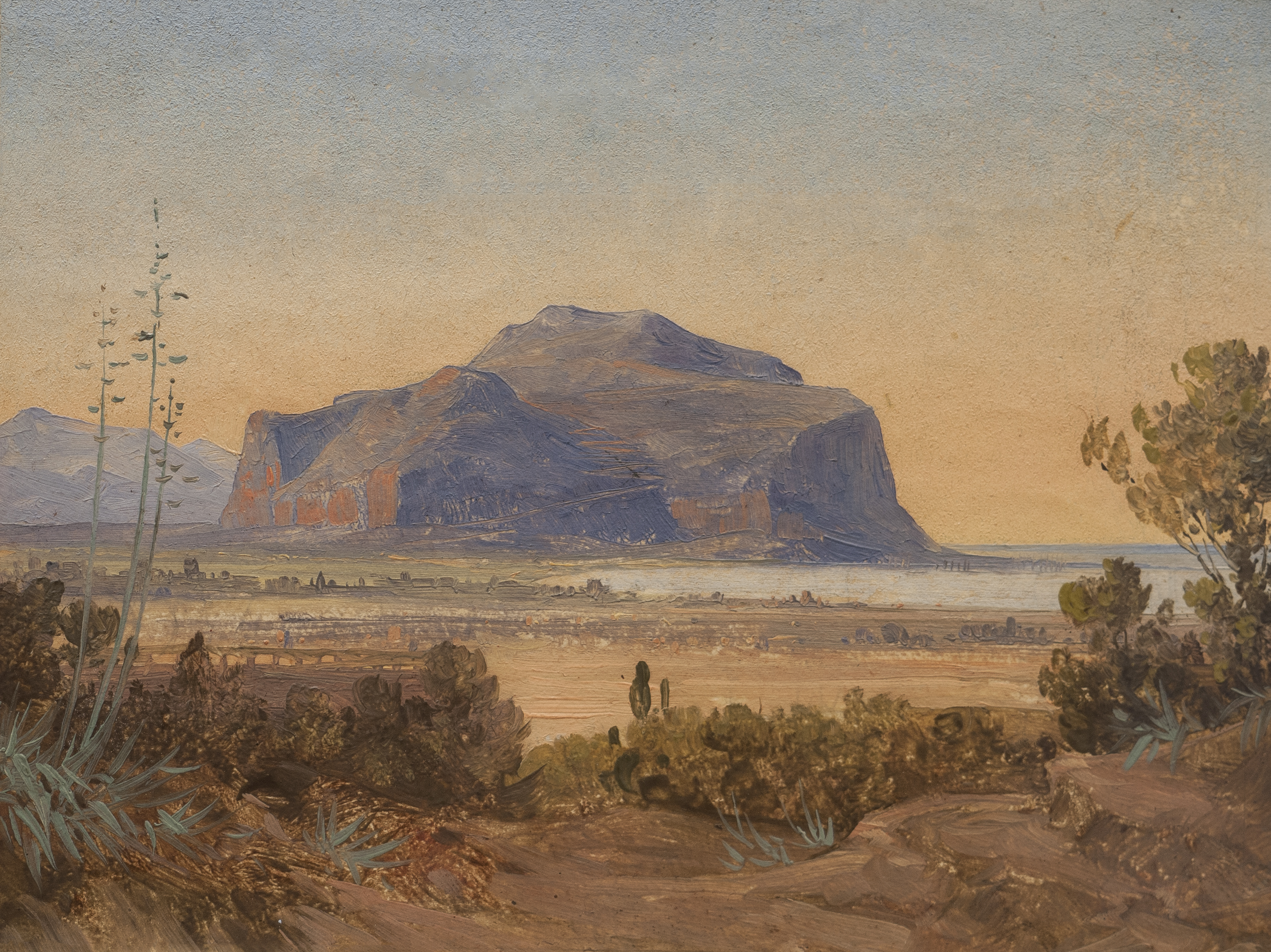Carl Hummel
Santa Maria di Gesù Palermo, 1843

Until 1842, Carl Hummel was a student of Friedrich Preller the Elder1 at the Fürstliche Freie Zeichenschule in Weimar. During his time at art school, he went on study trips to Holland and England, and, accompanied by Preller himself, to Norway, the island of Rügen on Germany’s Baltic coast, and Tyrol. On completion of his training, Hummel devoted the years 1842 to 1846 to a tour of Italy that is known to have included long stays in Rome, on Capri and Sicily.2 For this drawing, done in Palermo in 1843, he had to gain access to the convent of Santa Maria di Gesù. A fifteenth-century monastery complex nestling in the hills at the foot of Monte Grifone south of Palermo, it commanded magnificent views of the city and Monte Pellegrino opposite. Here, however, instead of reproducing the view beloved of most other artists, among them Carl Robert Kummer,3 who had been there ten years earlier (fig. 1), Hummel fixed his gaze firmly on the vegetation growing on the steep hillside. What fascinated the artist most were the ancient trees with gnarled trunks sculpted by the landscape and the wind. The delicate white heightening in the terrain and the architecture hinted at in the background have the effect of throwing the dynamic trees all the more sharply into relief. Typically for such a landscape, they are complemented by a large agave plant and a few cactuses. That Hummel was a highly regarded painter even during his own lifetime and even had collectors in the United States is hardly surprising. Yet he was soon forgotten after his death. Not until 1976 did the first works from his estate go under the hammer at Sotheby’s. An abundant collection of his studies survived the GDR period stowed away in the vaults of the Weimar Museum.
 Fig. 1 Carl Robert Kummer, Palermo, 1833, oil on paper, 11.3 × 15 cm, private collection
Fig. 1 Carl Robert Kummer, Palermo, 1833, oil on paper, 11.3 × 15 cm, private collection